I'm sorry your web browser is not supported we strongly recommend you use Microsoft Internet Explorer 10 or higher or an alternative browser.
Industry Innovation
Industry Sector Applications
When your application requires speed, repetitive and confident operation, accuracy, and reliability or if the operator is in a moving vehicle, hostile environment, or if the operator is wearing gloves, the proven reliability of a physical moving button combined with a dynamic label provides reliable outcomes, reduces operator error and makes learning new mission critical processes faster.
-
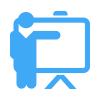 Education & Training
Education & Training
-
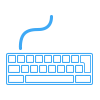 Keyboards & Control Panels
Keyboards & Control Panels
-
 Tactile Critical Environments
Tactile Critical Environments
-
 Heavy Industry
Heavy Industry
-
 Vending/ Self Service
Vending/ Self Service
-
 Gaming/ Gambling
Gaming/ Gambling
-
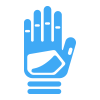 Protective Wear Environments
Protective Wear Environments
-
 Sound Studios
Sound Studios
-
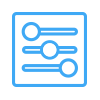 Editing Suites
Editing Suites
-
 Film & TV Production
Film & TV Production
-
 Defence & Transport
Defence & Transport
-
 Emergency Services
Emergency Services
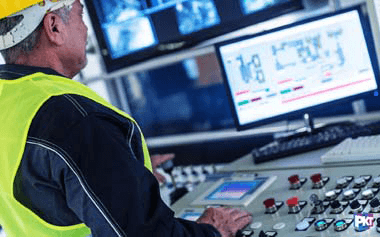
Control Panels
Modular generic control panels can be created with PKT that allows for adaption to almost any control panel where key labels need to change, errors states need to be highlighted with bright flashing colours, or self-labelling keys need to be grouped by colour.
Reduce the footprint of complex control systems with self-labelling buttons that allow scrolling through banks of options. Display anything on the keys, including video or a moving pictogram displaying the key's function, or the CCTV camera assigned to that key.

POS Vending
Real tactile keys can display pictures of the goods, with text labels and can be operated very quickly and confidently with a finger, wet or dry.
The same panel can be configured to show multitudes of different products, and be used in any commercial retail environment, in any language.
“Corner of a swipe-card" damage to touch screens becomes a thing of the past.

Video and Audio Editing
Multiple entire palettes of keyboard shortcuts for different editing modes can be displayed at different times, teaching the user where the shortcuts are, and continuously reminding them about shortcuts that they may not use on a regular basis.
Up to 30% editing speed increase over legacy keyboard + mouse approach.
Editors are trained by the keyboard so that they develop a motor memory of where the shortcuts are, turbo-charging editing workflows.
Work is completed faster, with fewer errors, deadlines are met, clients are happier. Editors using a PKT Keyboard would have a significant competitive advantage in this increasingly competitive market, where every improvement in efficiency counts.
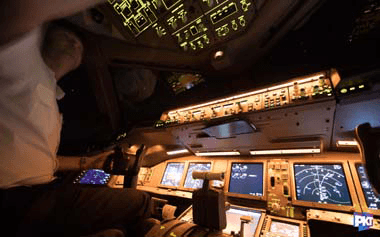
Aircraft Cockpit Systems
Navigation system designers can now relocate labels for soft keys into the keys themselves, increasing the available screen real estate for graphical information, and reducing potential confusion or doubt caused by angular parallax misalignment of the key to its corresponding legend.
Touch screens can be dangerous in a cockpit, especially during turbulence. It is still possible to have the dynamic user interface offered by a touch screen, but with positive action tactile buttons that allow an initial rest of the finger on the button, and then pressing at the appropriate moment without looking at it. This is simply impossible with a touch screen.
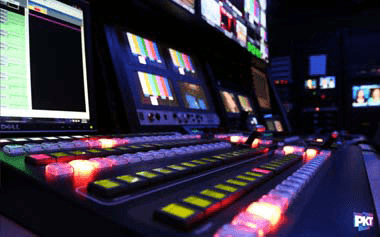
Broadcasting
Using a standard computer display to label the keys allows for full motion video to play on the keys.
Preview incoming and outgoing video on router control panels or vision switching devices.
Unlike traditional screen-to-a-button techniques of self-labelling buttons, every button in a PKT button array will always be the same colour cast and brightness for the life of the product. Having only one display greatly simplifies programming and reduces required compute power for embedded processors.
The cost savings aren't just for the manufacturing, they extend into reduced maintenance costs, programming hours, and for the embedded processor needed within the device.

Casino Gaming Button Decks
For nearly 100 years, slot machines have used buttons in game play. Recent introductions of dynamic buttons using PKT technology have been massively successful, resulting in a level of market dominance.
Players like playing with real buttons and sometimes complain about touch screen decks. Complaints are usually along the lines of “I never know if I've pressed it or not" or “My arm gets sore hovering over the buttons because I'm afraid of accidently brushing a button I didn't mean to push" are common and can be avoided by using PKT equipped buttons.
Dynamic updating of complete game themes can also include updates of content being displayed on the buttons decks, and as it's just another screen, the graphics boards driving the other displays in the cabinet can also be used to drive the button deck display.

Customer Contact Centre
Bringing your clients to the solution for their enquiry or issue as soon as possible requires taking every means possible to improve the efficiency of your call center associates.
Assigning direct field targets to keys on the keyboard results in motor memory development, which in turn shaves minutes off each call. No longer having to reach for a mouse to select a field for entry, or a script option selection, fields and options are selected within microseconds by hands on the keyboard, already trained by the keyboard to locate the required selection. The keyboard trains the operator.
As the software changes, as does the keyboard. Instantly updating with the updated software, a PKT keyboard in a customer contact centre is always up to date, and never obsolete. Even with a conservative 10% efficiency improvement, the ROI is realised in weeks. The years of competitive advantage realised after this period is icing on the cake.

Keyboard Design
The idea for a self-labelling keyboard is not new, but it's never been able to be realised until PKT.
Now not only possible, but viable, cost effective to make, highly adaptable completely reconfigurable to any custom application, any localised language equirement, any industry specialist needs.
Once a design is created, the same design, the same keyboard layout, can be changed in software to target any application, whether it's medical, military, banking share-trading, video/audio/image editing, 3D CAD, 3D Animation, desktop publishing, graphic design, educational, predictive text entry, customer contact centre, the possibilities are endless, all with the exact same BOM working for all of them.
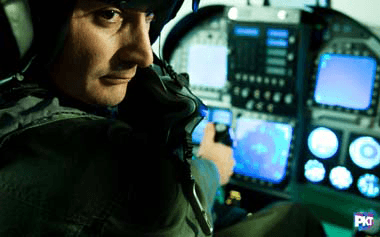
Military / Heavy Industry
Designers of user interfaces for military and heavy industry have been trying to implement dynamic user interfaces ever since the benefits of the first touch screen was realised, but have long struggled with the shortcomings of using touch screens in mission critical applications, or applications where workplace health and safety may be as risk due to the risks of using a touch screen in such an environment.
Operators can have the advantages of a dynamic user interface, but with the confidence, accuracy and speed of selection of a tactile button thanks to PKT. With excellent off-axis visibility, error states or warning flashes can easily be seen on a PKT panel from almost any angle.
Key displays can show complex graphics or high resolution video, unlike other screento- a-button approaches to self-labelling buttons. One could even see what a key does by watching a demonstration animation loop on that particular key.
How we can help
your business
Are you looking to develop a product where you can change the UI depending on the mode?
You would like to reduce the footprint of a control panel by consolidating controls into groups of buttons or modes?
Do you need to find an alternative to legacy screen-to-a-button picture keys?
You need to find a safer, more reliable, tactile option to a touch screen?
You are looking to develop an innovative and new type of user interface to fulfill a need in the market?
If you answered yes to any of the above we can help you with a solution.
